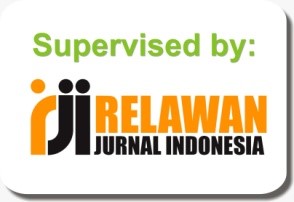Predicting Equity Crowdfunding Success
An Examination of United States Offerings using Sentiment Analysis
Abstract
Equity crowdfunding has grown exponentially in the United States since the passage of the JOBS Act in 2013, yet it continues to be a research area that is relatively unexplored in the United States due to the limited availability of data. U.S equity crowdfunding campaigns are notoriously unsuccessful, and this paper develops a predictive model for equity crowdfunding success to determine whether the positivity of the language used, and the length of the campaign description influences an investor’s decision to invest. A model is developed on a balanced training set and applied to a test set, and the overall results are evaluated using a confusion matrix to determine the accuracy, precision, and recall of the model. Our overall results indicate that both the tone of sentiment and the length of the campaign description are predictive of an equity crowdfunding campaign’s success. Specifically, the potential investors appear to be attracted to positive campaign descriptions that are written with concise language.
Downloads
References
Ahlers, G., Cumming, D., Gunther, C., and Schweizer, D. (2015). “Signaling in Equity Crowdfunding,” Entrepreneurship Theory and Practice, 39(4), 955-980.
Block, J., Hornuf, L., and Mortiz, A. (2018). “Which updates during an equity crowdfunding campaign increase crowd participation?” Small Business Economics, 50, 3-27.
Dority, B., Borchers, S., and Hayes, S. (2021). “Equity crowdfunding: US Title II offerings using sentiment analysis,” Studies in Economics and Finance, 38(4), 807-835.
Hayes, S., Dority, B., and Borchers, S. (2020). “Equity Crowdfunding Success: An Examination of Title II Offerings,” Review of Economic and Business Studies, 13(1), 9-25.
Colombo, M., Cumming, D., and Vismara, S. (2016). “Governmental venture capital for innovative young firms,” Journal of Technology Transfer, 41(1), 10-24.
Colombo, M. Franzoni, C., and Rossi Lamastra, C. (2015). “Internal social capital and the attraction of early contributions in crowdfunding,” Entrepreneurship Theory and Practice, 39(1), 75-100.
Connelly, S. Certo, T. and Ireland, D. (2011). “Signaling Theory: A Review and Assessment.” Journal of Management. 37(1), 39-67.
Cordova, A., Dolci, J., Gianfrate, G. (2015). “The determinants of crowdfunding success: evidence from technology projects,” Procedia Social and Behavioral Sciences, 181.
Courtney, C., Dutta, S., and Li, Y. (2016). “Resolving Information Asymmetry: Signaling, Endorsement, and Crowdfunding Success,” Entrepreneurship Theory and Practice, 41(2), 265-290.
Crawford, M. (2021, May 7). Equity crowdfunding Q1 2021 review. https://www.startengine.com/blog/equity-crowdfunding-q1-2021-review/
Horvat, E.A., and Papamarkou, T. (2017). “Gender Differences in Equity Crowdfunding,” Proceedings of the Firth Conference on Human Computation and Crowdsourcing, Quebec City, Canada.
Jayaswal, V. (2020). “Performance Metrics: Confusion Matrix, Precision, Recall and F1 Score,” Towards Data Science. Retrieved from https://towardsdatascience.com/performance-metrics-confusion-matrix-precision-recall-and-f1-score-a8fe076a2262.
Krawczyk, B. (2016). “Learning from imbalanced data: open challenges and future directions,” Progress in Artificial Intelligence, 221-232.
Loughran, T. and McDonald, B. (2016). “Textual Analysis in Accounting and Finance: A Survey,” Journal of Accounting Research, 54(4): 1187-1230.
Loughran, T. and McDonald, B. (2011). “When is a Liability not a Liability? Textual Analysis, Dictionaries, and 10-Ks,” Journal of Finance, 66(1), 35-65.
Lukkarinen, A., Teich, J., Wallenius, H., and Wallenius, J. (2016). “Success drivers of online equity crowdfunding campaigns,” Decision Support Systems, 87, 26-38.
Malaga, R., Mamonov, S., and Rosenblum, J. (2017). “Gender Differences in Equity Crowdfunding: An Exploratory Analysis,” International Journal of Gender and Entrepreneurship. https://doi.org/10.1108/IJGE-03-2018-0020.
Mamonov, S., Malaga, R., and Rosenblum, J. (2017). “An exploratory analysis of Title II equity crowdfunding success,” Venture Capital, 19(3), 239-256.
Mamonov, S. and Malaga, R. (2017). “Success Factors in Title II Equity Crowdfunding in the United States,” Twenty-third American Conference on Information Systems, Boston.
Ralcheva, A. and Roosenboom, P. (2020). “Forecasting Success in Equity Crowdfunding,” Small Business Economics, 55, 39-56.
Schwienbacher, A., and Larralde, B. (2010). “Crowdfunding of small entrepreneurial ventures,” D.J. Cumming, ed. The Oxford Handbook of Entrepreneurial Finance. Oxford: Oxford University Press.
SEC 2013. “Investor Bulletin: Accredited Investors,” SEC’s Office of Investor Education and Advocacy.
Shafi, K. (2021). “Investors’ Evaluation Criteria in Equity Crowdfunding,” Small Business Economics, 56, 3-37.
Silge, J. and Robinson, D. (2018). “Text Mining with R: A Tidy Approach,” Creative Commons Attribution-Non Commercial-Share Alike 3.0, Retrieved from https://www.tidytextmining.com/index.html.
Szmigiera, M. (2019). Crowdfunding – statistics & facts. Statista. https://www.statista.com/topics/1283/crowdfunding/
Vismara, S. (2016). “Equity retention and social network theory in equity crowdfunding,” Small Business Economics, 46, 579-590.
Yan, S. (2015). “Which Signaling Factors Facilitate the Success Probability of Equity Crowdfunding?” Bachelor’s thesis, University of Twente.













